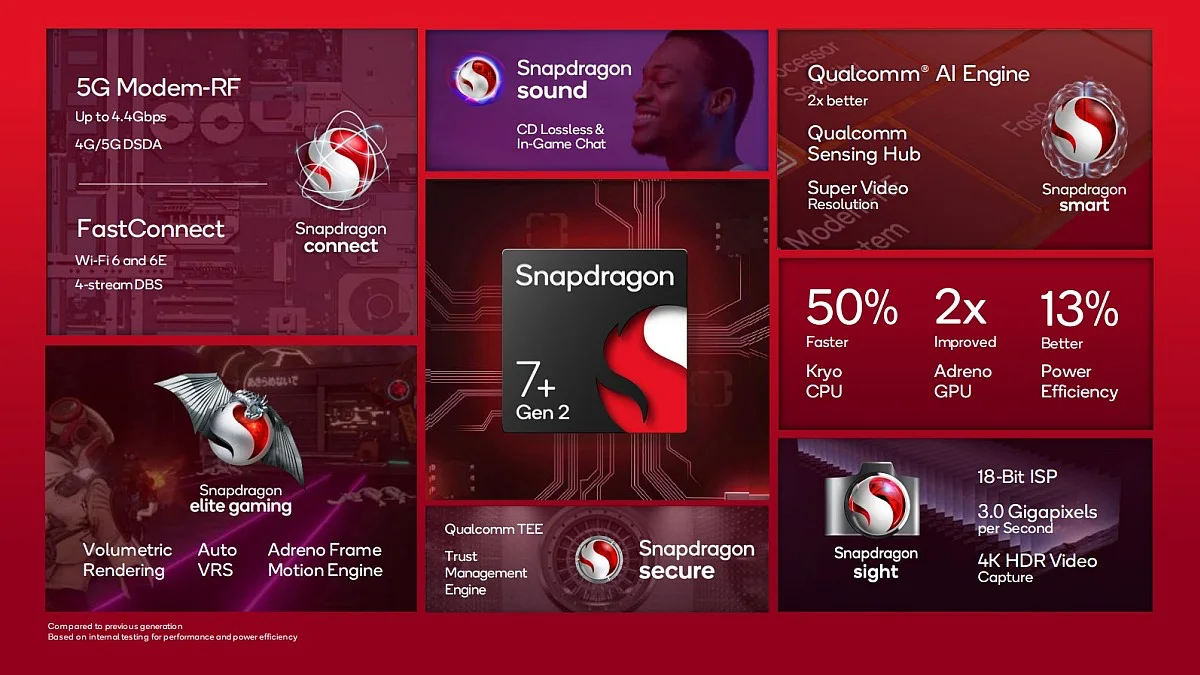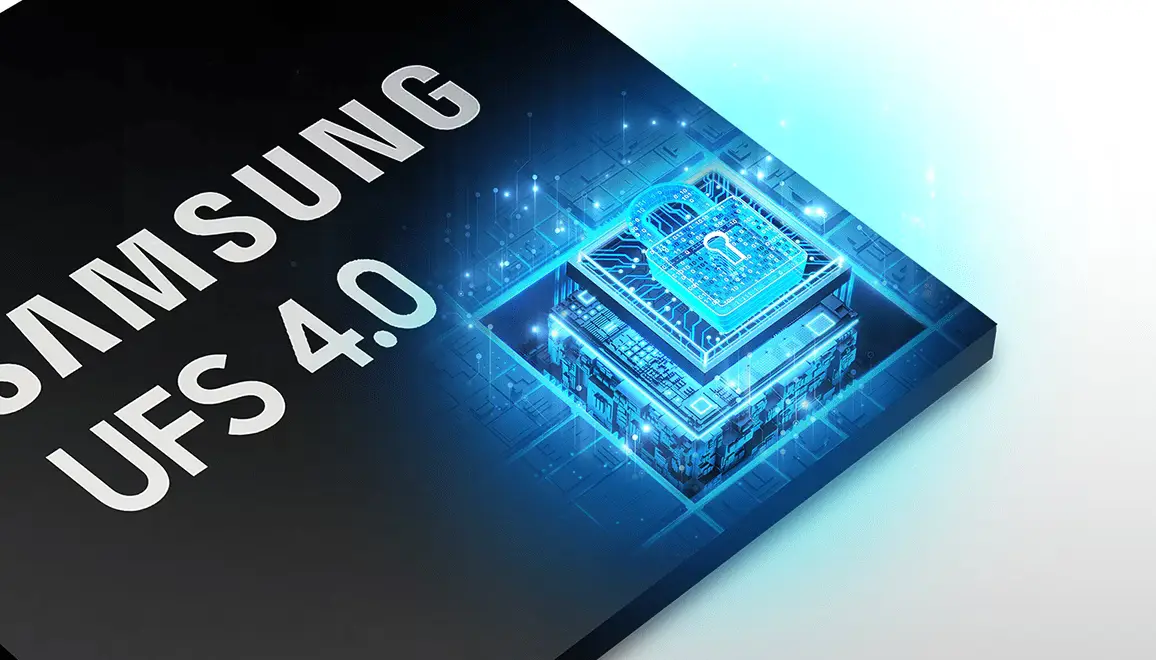Tech
Qualcomm launches Snapdragon 7+ Gen 2 made by TSMC 4nm SoC with supports Samsung’s 200MP cameras

There is no competition for Qualcomm in the SoC Market, which provides a variety of features with this much powerful processing capacity. It has so far launched many powerful processors in the market which work very well while doing any task of the device, whether its quick charging support, smooth gaming experience, or handling massive camera processing. All these tasks are easily done on the Qualcomm processor; for instance, Samsung has used Qualcomm’s latest snapdragon 8 Gen 2 for Galaxy S23 devices. Now Qualcomm is introducing a new Snapdragon 7+ Gen 2 processor, which will be available for mid-range devices; let’slet’s know more about it.
Snapdragon 7+ Gen 2 is the new SoC for mid-range Android devices.
Qualcomm, the world-renowned semiconductor and telecommunications equipment company, has recently announced the launch of its latest premium chipset, the Snapdragon 7+ Gen 2. This powerful new processor is the successor to last year’s Snapdragon 7 Gen 1, which failed to make an impact in the market. With a focus on delivering top-of-the-line performance, the Snapdragon 7+ Gen 2 boasts a 50% faster CPU and an impressive 200% faster GPU, making it a significant upgrade from its predecessor.
In addition to its impressive performance metrics, the Snapdragon 7+ Gen 2 also benefits from being manufactured using a cutting-edge 4nm process by Taiwan Semiconductor Manufacturing Company (TSMC). This process has already proven its worth with the highly-regarded Snapdragon 8+ Gen 1 and Snapdragon 8 Gen 2 processors. Furthermore, the chipset is capable of supporting 200MP camera sensors, which are currently only produced by Samsung’s System LSI division. This makes the Snapdragon 7+ Gen 2 an excellent choice for high-end smartphones and mobile devices that require advanced camera capabilities.
In detail, the latest processor is made with a 4nm manufacturing process; it supports UFS 3.1 storage. And LP-DDR5 memory up to 3200MHz with a maximum capacity of 16 GB. In comparison to the old processor (snapdragon 7 Gen 1), it will have 15 % better performance on Geekbench 5 (single thread) and 25% in GFX AZtec Rins 1440p, which is 3 times faster.
We will see some new features support in Snapdragon 7+ gen 2
With the new Soc, Qualcomm has added some new innovative features which will enhance the experience of the device; let’slet’s have a look at those features.
- Auto Variable Rate shading- the new chip will support Auto variable Rate shading, which will help in Gaming. It will be able to render in-focus content at maximum resolution while the background of the scene is at a lower resolution.
- Triple 18-bit ISP – the triple 18-bit ISP guarantees the possibility of taking 30 images in low light, and this also ensures that it will support up to 200-megapixel cameras. This indicates that the upcoming midrange devices will be available with big image sensors.
- AI Engine – with this capability, the midrange devices will get more accurate AI support that will bring more automation, and doing several tasks on the device will be more efficient, including Gaming and post-processing of photos and videos.
- Snapdragon X62 5G RF Modem – the latest Soc will support more strong internet connectivity, and it will support a download speed of up to 4.4 Gbps. Moreover, it will consume very less energy. Apart from these, it will also boost wifi performance and support up to 3.6 Gbps.
For more info, visit here
Tech
Google And Samsung Partnering Together On AI For Android & Galaxy Phones

Google and Samsung are coming together as their partnership goes beyond Android. On one side, Pixel smartphone devices use Samsung-manufactured Tensor chips; on the other hand, Smsung’s flagship Galaxy smartphones have AI features, like Circle to Search, noticeably before even the Pixel 8 series got this novelty.
In the report it is being unveiled, Rick Osteroh, SVP of platforms and devices at Google, stated that the brand’s “partnership has never been stronger.” A post on X shared by @rosterloh pointed to a positive meeting between TM Roh and @SamsungMobile leadership. It highlights a strong partnership between both and excitement about future collaborations, particularly in the area of AI.
Following the statement, he also attached a selfie with TM Roh, president and head of MX Business at Samsung Electronics.
Then, @SamsungMobile reposted Osterloh’s post and teased that both brands are actively working on expanding the functionalities of AI features for Android and Galaxy devices to enhance Galaxy experiences.
Google has already announced at the last Galaxy Unpacked event, back in January in San Jose, that the Samsung Galaxy S24 series will use Gemini AI models to power the forthcoming AI capabilities in the applications and services built by the Korean giant. The brand also brought new functionalities for Google Messages and Android Auto, powered by Gemini Nano.
For enhancing the summarizing facility, Samsung’s Smarter Notes, Voice Recorder, and Keyboard applications use the AI model Gemini Pro, whereas the Galaxy S24 series smartphones use Imagen 2 text-to-image technology to offer “Generative Edit” features in the Gallery application for upgrading photo editing.
Tech
Samsung Laptops Might Embrace Qualcomm’s New Snapdragon X Chip

Finally, Qualcomm has debuted its new ARM-based processor, the Snapdragon X Plus, designed for laptops. We anticipate Samsung to incorporate this chipset into its upcoming laptops.
However, this new chipset appears a bit below the company’s high-end laptop chipset, the Snapdragon X Elite, which was unveiled a few months ago and is expected to be used in Samsung’s forthcoming Galaxy Book 4 Edge.
The Snapdragon X Plus is a 4nm chip with a 10-core CPU. The Snapdragon X Elite and this newly launched chipset use the same Oryon CPU cores. This chipset is expected to be used in more affordable laptops running on the Windows OS. The CPU of this chipset operates at 3.4GHz, while the Snapdragon X Elite clocks at 3.8GHz.
Snapdragon X Plus’ integrated Adreno GPU has 3.8 TFLOPS of power, which could be equivalent to the Intel Core Ultra 7 series. The noticeable thing that remained constant in this new chipset is its NPU, which still offers 45 TOPS performance for on-device AI inference, similar to the Snapdragon X Elite.

This qualifies the chip as an AI chip, according to Microsoft Copilot’s minimum requirement of 40 TOPS. The brand has assured that the Snapdragon X Plus delivers 10% faster CPU performance than Apple’s M3 chipset while running at the same power. On the other hand, the Snapdragon chip claims to be 37% faster at the same wattage as the Intel Core Ultra 7 155H. This chip is expected to appear in laptops and will debut in the second half of this year.
Previously, Samsung has used Qualcomm’s top-of-the-line and mid-range Snapdragon chipset in its ARM laptops, and the giant has already unveiled that the forthcoming Galaxy Book 4 Edge will use the Snapdragon X Elite. Given this fact, it is quite possible that the brand could launch a more affordable Galaxy Book 4 series laptop with the Snapdragon X Plus.
Tech
Here’s The Key Fact Why UFS 4.0 Memory Just Got Faster

The fact is, other storage facilities can’t replace the device’s local storage; it remains an essential factor yet.
Despite cloud storage, smartphone storage remains crucial, and UFS 4.0 makes phone storage faster than ever before, but the fact is there is always room for improvement. The latest UFS chipsets run at the same speed as an SSD; however, a brand founded by Toshiba has managed to make the UFS 4.0 standard even more efficient.
Kioxia is a Japanese multinational computer memory manufacturer that develops, produces, and sells flash memory and SSDs, and now it has recently introduced chips that arrive with storage capacities of 256 GB, 512 GB, and 1 TB.
Kioxia Revs Up UFS 4.0 Memory Standard
The brand has now revealed the THGJFMT1E45BATV, THGJFMT2E46BATV, and THGJFMT3E86BATZ chips that offer 50% faster random writing in an 18% smaller area. The chips have their particular size based on their storage capacities, which are mentioned below:
- 256GB and 512GB chips: 9.0 x 13.0. x 0.8mm
- 1TB chip: 9.0 x 13.0 x 0.9mm
Kioxia has equipped the new UFS 4.0 chips with BiCS Flash 3D NAND, making them 18% smaller as compared to the previously announced 11 x 13mm chips. The write speed of the new UFS chips has been boosted by 15%, and the random write speed has increased by as much as 50%, with a 30% rise in random read speed as well, although the maximum read limit remains unchanged at 4.640 MB/s.
It is also announced that the production of the 256GB and 512GB variants of these new UFS chips will begin by the end of this month, whereas the 1TB variant will go into production in June.












